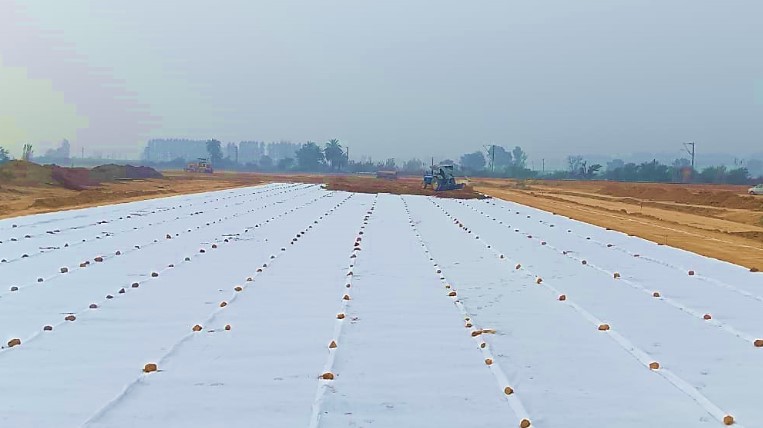Drainage on roadways
Why is proper drainage crucial for roadways?
To ensure the safety and long durability of road structures, proper drainage that does not allow surface water to collect is needed; this may culminate in unsafe conditions. The uncontrolled build-up of water can create a dangerous condition; for example, a layer of water forms between the tires and the road, resulting in losing contact with the road surface and hence control. Apart from that, effective drainage systems also maintain the structural integrity of the road since they keep off the erosion of the base materials, which may result in potholes and other forms of damage.
Effects of poor drainage:
Water remaining on the surface reduces the adhesion of the vehicles and increases the distance of braking, thus increasing the risks of accidents. Water also percolates road materials and contributes to early failure, raising maintenance costs and resulting in expensive repairs. In addition, standing water will provide a platform for mold and algae. This will reduce pavement friction and, hence, slippery pavement that is unsafe.
What are the types of drainage?
To build roads, various types of drainage structures are required. These include:
- Road gullies and curb inlets: Primarily located in urban areas, these structures help convey rainwater from pavements into sewers to avoid flooding and ponding.
- Gutters: They are mainly found in residential areas and they collect water from the roadside directing it into soak away points to prevent water logging.
- Culverts: They are put under roads to allow water to pass from one side to the other thereby preventing accumulation on road surfaces.
- Catch basins and drop inlets: These structures are integrated into the stormwater management system, receiving runoff from gutters as well as pavements redirecting them towards storm sewers for purposes of flood prevention.
Drainage system design for road construction
Adequate drainage is fundamental for traffic safety and longevity of infrastructure through both surface and subsurface systems designed for handling diverse problems related to the control of water, ensuring that all weather conditions do not make a road impassable.
Surface drainage systems:
The principle of surface drainage systems is to prevent standing water on the road, which may cause dangerous driving conditions and degradation over time. This is made up of:
- Gutters: Gutters are shallow channels that are located at the sides of roads in towns and residential areas, where they direct runoff into storm drains, thus preventing accumulation of water on the road.
- Curbs: Curbs act as dams that collect runoff and channel it towards gutters and curb inlets. These structures also elevate the roadside and offer support for pedestrians while preserving the pavement structurally.
- Roadside ditches: Roadside ditches are simple yet effective drainage solutions commonly found in rural areas. They run parallel to the road collecting surface runoffs, thus preventing edge erosion as well as any water from getting into the road sub-base.

Subsurface drainage systems:
Water infiltration is the responsibility of underground drainage systems and not surface drainage systems used in roads. Poor management of this could be equally as disastrous. Some of these components include:
- Pipes and drains: These amenities are placed underneath the road surface to remove percolated water that affects pavement, subgrade, and base materials that lead to potholes or other defects on the road.
- Permeable materials: These items allow water through the road structure, directing it into pipes found in drainages so that it dries up and becomes stable.
- Geotextiles: In most cases, geotextiles act as filters for subsurface drainage systems which help soils stay away from aggregates while improving water movement while maintaining its structural integrity.
- French drains: This is a gravel-filled trench with a perforated pipe that directs groundwater away from the road, protecting it from flooding including its foundation and subgrade.
Good surface design and subsurface drainage systems will make your roads safe for use for a long time. Properly designed, constructed, and maintained surfaces play an important role in minimizing costly repairs required to maintain these roads over their life span. This proves that effective drainage systems are important in maintaining safe and functional roads.
Strata Geosystems assures road efficiency, safety, and longevity through its innovative and sustainable drainage solutions using out hero product StrataDrain. In putting more emphasis on proper drainage in the construction and maintenance of roads, we make roads safer and maintenance more cost-effective, improving the durability of infrastructure. This underlines the importance of proper drainage systems for roadways and encourages Strata Global to persist in delivering innovation in this critical area of infrastructure development.
